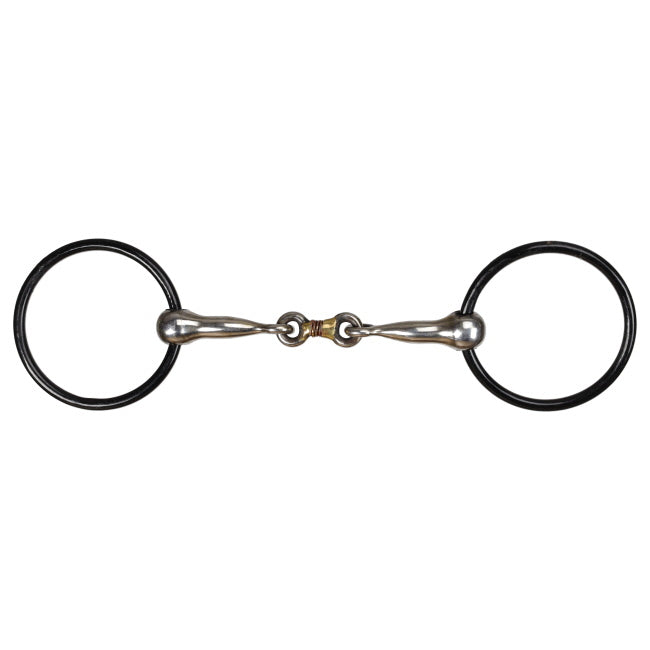What is a Bit?
A bit is a tool for a rider to communicate and control her horse. Riders equip their horses with bits to control their horse from the saddle.
Overall, all style bits have the same five parts. First, we have the mouthpiece. You will place this piece inside your horse’s mouth. The bit will fall to the back of his mouth behind his teeth. Next, the second part of the bit is the cheeks. The cheeks are the sides of the bit that run outside your horse’s mouth.
The cheeks are broken into two portions, the purchase and the shank, with the purchase connecting to the mouthpiece. It helps apply pressure to your horse’s face to give commands and control. The shank also helps with pressure and communication. Overall, the shank provides leverage to provide a gentle or intense sensation to your horse.
Finally, we have the rings. The rings are the portion of the bit that bring all the pieces together. The primary purpose of the rings is to attach the reins to the bit.
What Makes the Western Bit Different?
Most Western bits have longer shanks to give the rider more leverage than other bit styles. Additionally, riders attach two reins to Western bits.
Bit Strength
Gentle: Gentle bits are the softest bits for your horse. The mouthpiece is thick, and the rings are moose. Your horse will experience no pinching as light pressure is applied. These bits are excellent for novice riders and young horses.
Mild: Mild bits are a step up from gentle bits. They provide a rider with more control but do not inflict significant pressure. The mouthpiece is smaller than a gentle bit.
Harsh: Harsh bits are designed to apply the most pressure to the horse. These should be reserved for experienced riders. Additionally, older horses may need the extra pressure because time and work have desensitized them from it. Overall, the rider has the most leverage with these bits.
What is the right bit for your horse?
 You want to find the perfect bit for you and your horse. It is a balance between comfort for you and your horse and control. The bit is the most vital tool for a rider. Investing in a high-quality bit will be well worth it in the end.
You want to find the perfect bit for you and your horse. It is a balance between comfort for you and your horse and control. The bit is the most vital tool for a rider. Investing in a high-quality bit will be well worth it in the end.
The experience of you and your horse will play a role in your bit choice. A novice rider usually uses a gentle bit because she does not know how to communicate correctly with her horse. This will avoid hurting the horse and poor communication. As a rider’s experience grows, the bit can become harsher (if necessary).
For your horse, you must consider age, experience, comfort, and intent. Younger horses respond to gentle bits, while older, more experienced horses need harsher bits. Experience and intent will lead you to choose a bit that works for your horse based on its history. Finally, a horse in pain or uncomfortable will not respond well to commands. Comfort is key.







